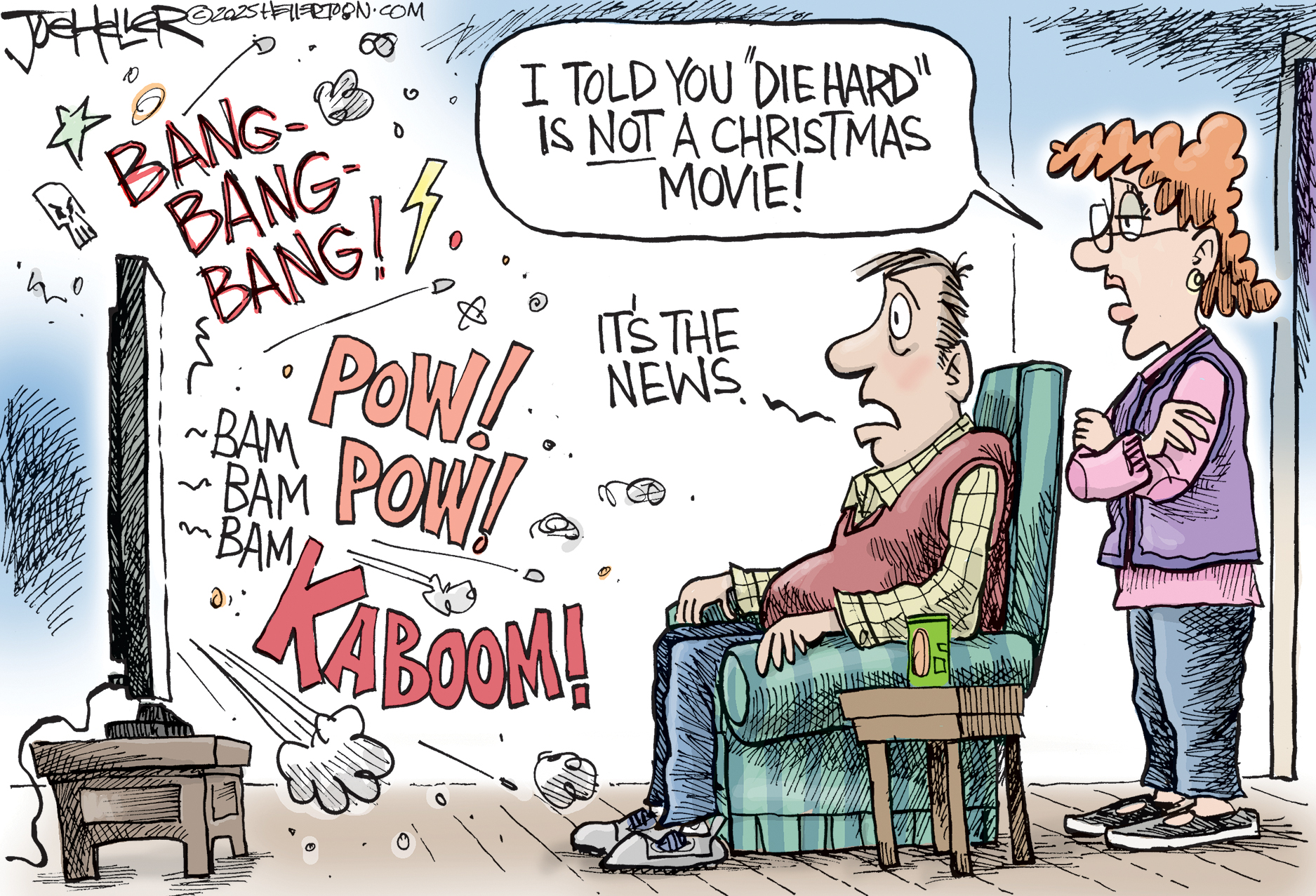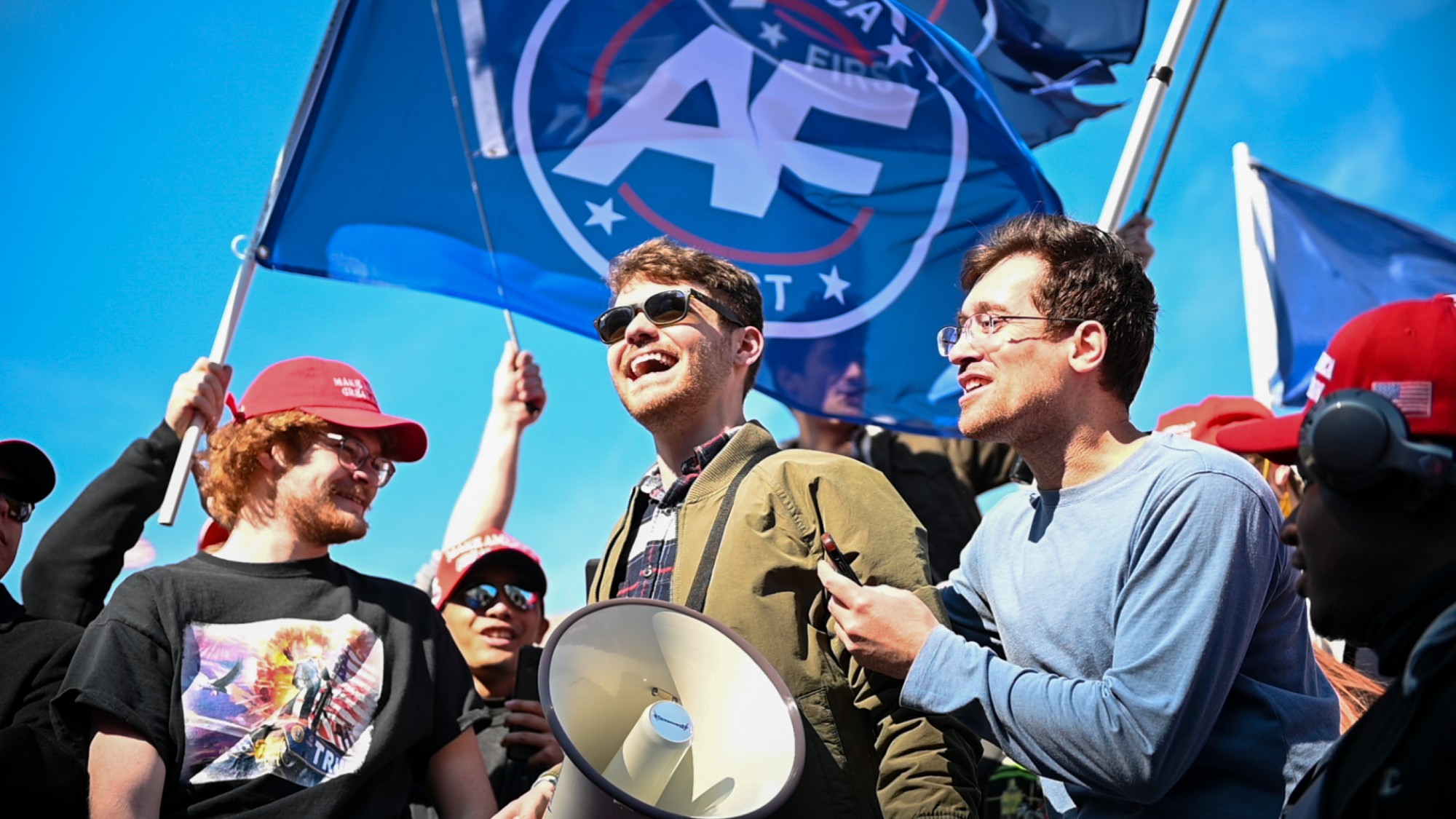Owning a piece of greatness
After he caught the final out of the 2004 World Series, Boston Red Sox first baseman Doug Mientkiewicz took the baseball home and vowed to sell it. “It
Who would pay a fortune for a used baseball?
Millions of devoted fans. For the true sports fanatic, scuffed balls, scrawled autographs, and other mementos provide a tangible connection to their heroes—and to something larger than themselves. Baseball fans, in particular, fetishize mementos from their favorite sport, which is steeped in lore, legends, and numerical milestones. The most prized relics, such as Babe Ruth’s old bat or the ball that gave the Red Sox their first World Series victory since 1918, are enshrined behind glass, like the Declaration of Independence or the bones of a saint.
What makes these items valuable?
The Week
Escape your echo chamber. Get the facts behind the news, plus analysis from multiple perspectives.

Sign up for The Week's Free Newsletters
From our morning news briefing to a weekly Good News Newsletter, get the best of The Week delivered directly to your inbox.
From our morning news briefing to a weekly Good News Newsletter, get the best of The Week delivered directly to your inbox.
Demand. Like all collectibles, the value of sports memorabilia is determined solely by what people will pay for them. In more innocent times, autographs and home run balls had little value, because players usually gave them away for free. But in the 1960s, collectors began paying for the most sought-after autographs and mementos. When entrepreneurs realized that fans would pay good money for a scrawled signature from Mickey Mantle or Willie Mays, a new industry was born. Today, professional dealers charge small fortunes for baseballs signed by Alex Rodriguez, sweat-stained jerseys signed by Shaquille O’Neal, and golf balls discarded by Tiger Woods.
How big is the industry?
It’s huge, with anywhere from $1 billion to $6 billion in annual sales. Exact figures are hard to come by, because the business is highly decentralized and largely unregulated. Sports memorabilia is being sold out of scruffy storefronts, at big auction houses, on thousands of Web sites, and inside traveling trade shows. On eBay, sports-related auctions now account for more sales than any category but cars and consumer electronics.
How much do people pay?
A free daily email with the biggest news stories of the day – and the best features from TheWeek.com
For the right ball or bat, as much as you’d pay for a sports car or an eight-bedroom mansion. Actor Charlie Sheen forked over $93,500 for the ball that dribbled between Bill Buckner’s legs in game six of the 1986 World Series. A Baltimore businessman paid the fan who caught Eddie Murray’s 500th home run $500,000, “so the ball would stay in Baltimore.” Any memento connected to Ruth gets top dollar; the bat the Bambino used to hit his first home run at Yankee Stadium was recently sold for $1.26 million. But perhaps the biggest boon to the memorabilia business was the 1998 home run race between sluggers Mark McGwire and Sammy Sosa. McGwire and Sosa each surpassed the single-season home run record of 61, and kept on going; Sosa finished with 66, and McGwire with 70. With millions of fans cheering on their historic exploits, a sports agent named Michael Barnes came up with a brilliant idea.
What did he do?
Barnes signed contracts with the fans who caught McGwire’s and Sosa’s dueling home runs, forming them into a cartel like OPEC. These fans agreed to set a minimum price for the balls and auction them off at the same time to the highest bidders. That way, they’d all be guaranteed top dollar. At the auction, collectors bid frantically for McGwire’s home run balls 63, 64, and 67 through 70, as well as Sosa’s Nos. 64, 65, and 66. Comic book artist (and baseball fanatic) Todd McFarlane paid the highest price, for McGwire’s 70th—$3 million. That’s the most expensive sports relic ever, but it certainly is not the strangest.
What else do people buy?
Everything from used jockstraps to used chewing gum. In 1997, a New York auction house sold off a collection of Mickey Mantle’s personal belongings. Among the items gobbled up were Mantle’s prescription bottles and his beat-up Rockport walking shoes. In 1999, a woman paid $7,475 for a pair of false teeth worn by Ty Cobb. A fan shelled out $2,405 to buy pitcher Tim Hudson’s discarded goatee shavings. Nolan Ryan’s jockstrap sold for $25,000. Arizona Diamondback Luis Gonzalez’s already-chewed bubble gum went for $10,000.
Was this stuff authentic?
Apparently so. But that’s not always the case. Law enforcement officials estimate that 75 percent of the autographs on the market are fake. “When it comes to memorabilia, people suspend the skepticism they bring to ordinary affairs of life,” says federal prosecutor David Rosenbloom. “Why is it that if someone gave you a $50 check signed by Michael Jordan, you would call the bank, but if somebody charged you $900 for a signed jersey, you would say, ‘Thank you.’” Recently, companies calling themselves memorabilia “authenticators” have sprung up, claiming an expertise in verifying autographs and other keepsakes. But prosecutors warn that some authenticators are in cahoots with the counterfeiters. “If you don’t personally see it getting signed,” says Chicago FBI agent Bob Long, “beware.” For that reason, fans now pay hundreds of dollars to attend shows where they can witness players and former players signing autographs.
Do the players get a cut?
-
 Political cartoons for December 21
Political cartoons for December 21Cartoons Sunday’s political cartoons include Christmas movies, AI sermons, and more
-
 A luxury walking tour in Western Australia
A luxury walking tour in Western AustraliaThe Week Recommends Walk through an ‘ancient forest’ and listen to the ‘gentle hushing’ of the upper canopy
-
 What Nick Fuentes and the Groypers want
What Nick Fuentes and the Groypers wantThe Explainer White supremacism has a new face in the US: a clean-cut 27-year-old with a vast social media following